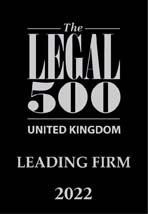The right to light is a complex legal concept that can significantly impact property rights, particularly in urban areas with dense development. It is a common law right that protects the access of natural light to a property. One of the key aspects of this right is the 20-year rule, which governs the acquisition and loss of this right.
Free Initial Telephone Discussion
For a free initial discussion with a member of our New Enquiries Team, get in touch with us today. We are experienced in dealing with all the aspects of construction law and Property Litigation, and once instructed, we will review your situation and discuss the options open to you in a clear and approachable manner. Early expert legal assistance can help ensure you are on the best possible footing from the start and also avoid the stress of dealing with these issues on your own. Simply call us on 0345 901 0445 or click here to make a free enquiry and a member of the team will get back to you.
Understanding the Right to Light
To understand the 20-year rule, it’s essential to grasp the fundamental concept of the right to light itself. This right is not a statutory provision but a common law right, meaning it has developed through centuries of legal precedent.
Essentially, the right to light protects the level of natural light that a property has traditionally received. This means that if a property has been receiving a certain amount of light for a significant period, it has the right to continue receiving that level of light. Any obstruction to this light, such as a new building or extension, can potentially infringe on this right.
The 20-Year Rule: A Closer Look
The 20-year rule is a crucial aspect of the right to light. It dictates that a property owner can acquire the right to light by the continuous and uninterrupted enjoyment of light for a period of 20 years.
How to Acquire the Right to Light
To acquire the right to light, the following conditions must be met:
- Continuous and Uninterrupted Enjoyment: The property owner must have enjoyed the light for 20 years without any significant interruptions.
- Sufficient Light: The level of light must be sufficient to serve the purpose for which the property is used. This is often determined by a technical assessment.
- Defined Aperture: The source of the light, such as a window or skylight, must be clearly defined.
Loss of the Right to Light
Conversely, the right to light can be lost if it is not exercised for a continuous period of 20 years. This means that if a property owner allows their property to be obstructed from light for 20 years, they may lose their right to claim it back.
Implications of the 20-Year Rule
The 20-year rule has significant implications for property owners, developers, and architects.
- Property Values: The right to light can significantly impact the value of a property. Properties with good access to natural light are generally more desirable and can command higher prices.
- Development Restrictions: The 20-year rule can limit development opportunities, particularly in urban areas where space is limited. Developers must carefully consider the potential impact of their projects on neighbouring properties’ rights to light.
- Legal Disputes: Disputes over the right to light can be complex and costly. It is essential to seek legal advice to understand your rights and obligations.
Seeking Legal Advice
If you are considering a development project or are concerned about your property’s right to light, it is crucial to seek legal advice. A qualified solicitor can assess your specific circumstances and advise you on the best course of action.
Blackstone Solicitors is a leading law firm with extensive experience in property law, including matters related to the right to light. Our team of experienced solicitors can provide expert advice and representation to protect your interests.
We can help you with:
- Assessing your property’s right to light
- Advising on potential development restrictions
- Negotiating with neighbouring property owners
- Representing you in court proceedings, if necessary
Conclusion
The right to light is a valuable asset that can protect your property’s value and your enjoyment of your home or business. Understanding the 20-year rule and its implications is essential for property owners and developers alike. By seeking legal advice, you can ensure that your rights are protected and that your projects are compliant with the law.
How we can help
We have a proven track record of helping clients deal with construction law and property litigation. We will guide you diligently and ensure all checks are carried out swiftly and efficiently and we firmly believe that with the right solicitors by your side, the entire process will seem more manageable and far less daunting. You can read more about the range of construction law and property litigation services we offer by clicking here: https://blackstonesolicitorsltd.co.uk/construction-solicitors/
How to Contact Our Property Litigation Solicitors
It is important for you to be well informed about the issues and possible implications of a property dispute. However, expert legal support is crucial in terms of ensuring a positive outcome to your case.
To speak to our Property Litigation solicitors today, simply call us on 0345 901 0445, or click here to make a free enquiry. We are well known across the country and can assist wherever you are based. We also have offices based in Cheshire and London.
Disclaimer: This article provides general information only and does not constitute legal advice on any individual circumstances.



